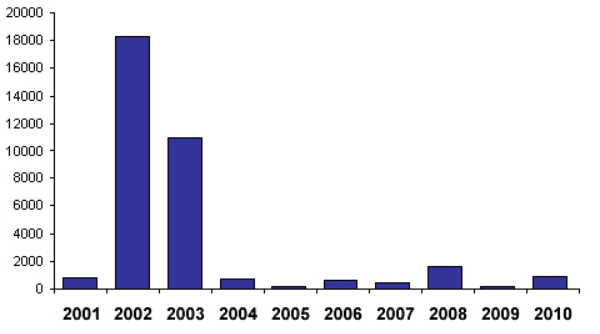Vaccinating against Measles
The epidemiological curves comparing pre- and post-vaccination periods show a sharp decrease in the number of cases over the years. It is clear that vaccinations have significantly changed the incidence of diseases for which immunisation exists, thus saving lives, reducing disease outcomes, reducing overall population suffering and improving quality of life.
The disease before and after the vaccination campaign in Italy
Measles is an infectious disease found worldwide. It is one of the most frequent eruptive fevers, although it has been much less common since the introduction of booster vaccination. In countries with a temperate climate, it affects children towards the end of winter and in spring.
Measles is subject to mandatory reporting and is included in class II diseases. Furthermore, in accordance with the indications contained in the National Plan for the Elimination of Measles and Congenital Rubella 2003-2007, in April 2007 a special measles surveillance system was set up.
Figure 1 shows the trend in Italy of annual class II measles notifications from 1970 to 2009 and the trend of vaccination coverage for one dose of the anti-measles (M) or measles-mumps-rubella (MMR) vaccine within two years of age, from 1985. As can be seen, the increase in vaccination coverage by two years of age corresponds to a decrease in the number of cases of measles.
Figure 1: Annual reported cases of measles and vaccination coverage for M-MPR in children by 2 years of age, Italy, 1970-2009. Source: Italian Ministry of Health

Figure 2. Number of reported cases of measles in Italy 2001-2010 (Source: ECDC)




